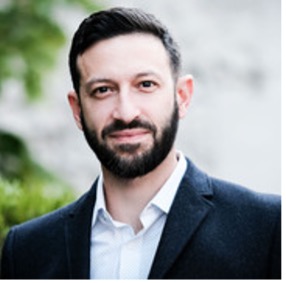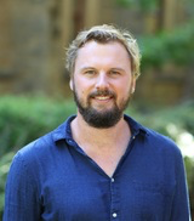Sustainable Development Goals for City of Melbourne:
A Strategic Prioritisation Framework for City of Melbourne
Connected Cities Lab
Faculty of Architecture, Building and Planning

Connected Cities Lab in the Faculty of Architecture, Building and Planning is working with the City of Melbourne to develop a best-practice framework for localising and embedding the United Nations’ Sustainable Development Goals (SDGs) in the City’s long-term strategic planning processes.
Localising the SDGs in Melbourne
Building on engagement with City of Melbourne from the SDGs Cities Challenge, ‘SDGs for City of Melbourne’ will develop a state-of-the-art SDG localisation framework that is tailored to the City’s existing data collection processes, strategic planning environment, and governance settings.
‘What you measure affects what you do’
A Voluntary Local Review (VLR) is a process in which local or regional governments voluntarily and routinely assess their progress against the 2030 Agenda and the SDGs. VLRs make it possible for local or regional governments to share experiences, challenges, and lessons. They also open the door to new partnerships that can assist them to implement their own local vision.
In the spirit of ‘what you measure affects what you do’, VLRs can also enable local governments to engage citizens in the review process, strengthening accountability and inclusive governance. The resulting ‘VLR Report’ details the process and results of these reviews. This aims, in the long-term, to complement Voluntary National Reviews by filling the gap between local reality and the national policy environment and by informing policy makers at the national level.
Consistent reporting to strengthen governance and partnerships
The first phase of the project, that began in the second half of 2020, focused on conducting a data gap analysis to determine how much SDG-relevant data the City already collects. It then integrated the City’s existing data set (an aggregate of more than 600 indicators) with a global urban-related subset of the 169 targets of the global UN framework.
A key principle for this process was maximising compatibility with national, regional, and global reporting mechanisms, including the UN Statistical Commission’s Inter-agency and Expert Group on SDG Indicators (IAEG-SDG), the World Council on City Data (WCCD) and UN reporting onSDG progress for the Asia-Pacific.

In addition, an SDGs Masterclass was conducted with all City of Melbourne Directors and General Managers to familiarise them with the goals, with a subset of more than 100 SDG targets being aligned at branch level within the City through a comprehensive policy review.
Global goals, localised targets
The City of Melbourne has worked closely with Connected Cities Lab to assist researchers and participants to understand the constraints and benefits of aligning local government’s statutory requirements (Council Plan, Council Vision, etc) with SDGs reporting. City of Melbourne CEO Justin Hanney stated that:
"Embracing the United Nations’ Sustainable Development Goals means making Melbourne a better place to live and work. The goals will help guide our planning and measure our success, by providing a benchmark for comparison with other leading cities around the world.
The goals will help guide our thinking when we invest in services such as recycling, renewable energy, open space, cycling lanes, water conservation and planting trees and will ultimately benefit our city."
Early versions of VLRs from other cities tailored the goals to local settings. A key learning for the City of Melbourne is that the best way to enable comparability is to have consistency at the SDG goal and indicator levels, but to localise the targets. Retaining both vertical (national, global) and horizontal (city-to-city, regional) lines of sight by prioritising global indicator sets such as the official IAEG-SDG and WCCD indicators where possible, enables both city-to-city comparability, and the flexibility for tailored local efforts that are aligned with national and regional agendas.
Melbourne as a leader in the Asia-Pacific region
When assessing the extent of SDG alignment for its VLR, the City of Melbourne was encouraged by the fact that of the approximately 127 ‘urban relevant’ SDG targets, data was already being collected for 36 percent of these.
The next steps will be to continue developing the prioritisation framework and complete the VLR process by facilitating community engagement and collaboration in SDG localisation. The City of Melbourne also recognises that, because it is relatively well-resourced compared to other cities, it has a responsibility to use what it has learned, communicate and to provide leadership that builds the capacity of other cities in the Asia-Pacific region.
Researchers



